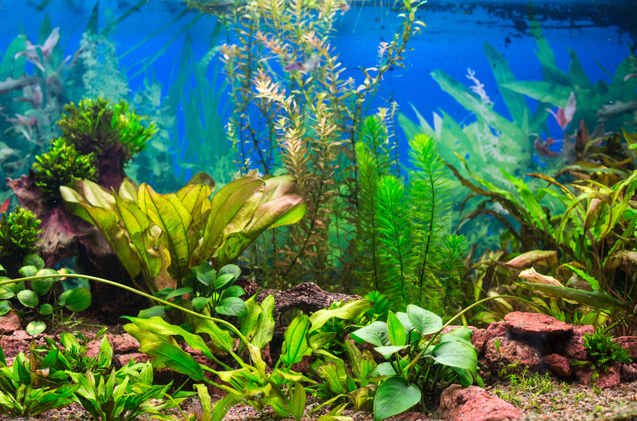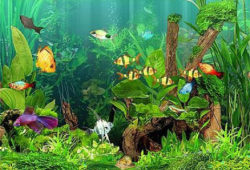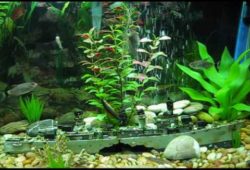Frequently asked questions on electrical safety
This article is about Frequently asked questions on electrical safety.

Contents
- 1 Now that the new Part P Regulations have come in, what should I remember about wiring in equipment and switches for aquaria and ponds?
- 2 I’m worried about power cuts. Once the RCD I use goes off, it won’t come back until I reset it. What are my options?
- 3 What do the IP numbers mean in relation to outdoor/ waterproof equipment?
- 4 Can I join two outdoor cables together to my pond pump?
- 5 If I don’t have enough indoor sockets for my aquaria, what are my safest options?
Now that the new Part P Regulations have come in, what should I remember about wiring in equipment and switches for aquaria and ponds?
Part P of the Building Regulations, which came into force on January 1st this year, defines the scope of electrical work that can be carried out by an unqualified person.
In certain parts of the house, an unqualified person can do simple work such as adding extra socket outlets. In other parts such as the kitchen, you are only allowed to change an existing socket. And you are not allowed to do any electrical work in the bathroom.
You are also not allowed to do any work outdoors. Failing to comply with this new law can be a criminal offence. Having said this, an unqualified person is still allowed to make an installation outdoors, providing they have it checked and approved by a Building Control Authority to ensure that it complies with Wiring Regulations. You must also first report to them the fact that you intend to start the work.
Alternatively, if your outdoor installation is not permanently connected to a house or garage supply, but is plugged into a 13A plug socket, then it falls outside the scope of the Building Regulations. However, just because it is plugged in rather than permanently wired does not make the electricity any less dangerous, and so it must still comply with the Wiring Regulations.
The Wiring Regulations define, for example, that all buried cables must either be of the armoured type or within a steel conduit or a concrete duct (not a plastic tube or hose pipe). They also make it mandatory that all outdoor installations are protected by a 30 milliamps Residual Current Device (RCD).
Since working with armoured cable is difficult, it may be worth using one of the proprietary pre-wired cable systems.
I’m worried about power cuts. Once the RCD I use goes off, it won’t come back until I reset it. What are my options?
The problem with power cuts occurs specifically with RCD plugs and adaptors. These are meant for use with power tools so they don’t start up again while they are unattended when the power returns. This makes them far from ideal for use with ponds with fish.
RCD plugs and adaptors are ‘electrically’ latched; what you need is an RCD that is ‘mechanically latched’. Most RCD 13A sockets are mechanically latched, and so are RCD Spur Units.
The simplest thing is to replace the socket that your pump is plugged into with an RCD socket. (You are allowed to do this in the new regulations). Alternatively, you can use an RCD Spur unit, such as supplied in the Armadillo Pond Connection Kit.
What do the IP numbers mean in relation to outdoor/ waterproof equipment?
This is an international standard (BS EN 60529) that specifies the degrees of protection provided by the enclosures of electrical equipment. So how well it protects against water and solid matter (dust, soil, etc.) getting in the enclosure.
The letters ‘IP’ stand for ‘International Protection’. The first digit (from 0 to 6) indicates the level of protection against solid bodies. The second digit (from 0 to 8) refers to the protection against water.
The protection indicated by the first digit are:
0: Does not protect against any solid objects
1: Protects against objects less than 50mm diameter
2: Protects against foreign objects less than 12.5mm
3: Protects against foreign objects less than 2.5mm
4: Protects against foreign objects less than 1.0 mm
5: Protects against dust such that it will not affect the performance of the equipment
6: Totally dust tight.
The protection indicated by the second digit are:
0: Does not protect at all
1: Protects against vertically dripping water
2:-Protects against dripping water when tilted up to 15 degrees
3: Protects against spraying water
4: Protects against splashing water
5: Protects against jets of water
6: Protects against powerful jets of water
7: Protects against immersion in water to one metre for 30 minutes
8: Protects against continuous immersion in water (to a depth specified by the manufacturer). Weatherproof sockets are protected against the worst of weather conditions when they are IP55 or better.
Most cable joining connectors are IP67, and some aquatic plugs and sockets are claimed to be IP68. A word of warning – the manufacturer’s IP rating is only achieved when they are installed as per the instructions.
Personally, I would avoid permanently submerging IP68 plugs and sockets since no amount of testing can show what will survive permanent immersion without deterioration.
Can I join two outdoor cables together to my pond pump?
Yes, as long as you use a suitable cable connector and follow manufacturer’s instructions. Don’t rely on insulation tape as a means of protecting joined cables.
You should not bury a joined cable since you cannot be sure that it will remain dry inside its steel conduit or concrete duct. If it’s not in either of these, it must be armoured cable.
If you want to join a flexible cable to an armoured one, use a suitable junction box. The pre-wired cable systems, eg. the Armadillo range, are supplied with the appropriate junction box already fitted.
If I don’t have enough indoor sockets for my aquaria, what are my safest options?
A variety of trailing extension sockets and adaptors are available, but these can look untidy. You might like to consider one of the wired-in socket converters. These convert a single socket to a double, or a double to a three-way socket outlet.
Simply remove the existing socket and the converter screws in its place. Make sure you switch off the power at your main isolating switch first. Ensure you don’t get the live and neutral crossed!
Or use one of the new Two2Four plug-in socket converters that give a neat appearance – and you don’t need to replace the existing socket.
If the thermal cut-out on my pond kicks in, should I check anything electrical once I’ve sorted the pump?
There are not likely to be any electrical problems if the pump overheated, causing the cut-out to trip.
Before putting the pump back, check that the cable has not become worn or damaged. If using a water-proof plug and socket, check that this is dry around the sockets and plug pins. You should also check that your RCD is working properly by pressing the test button and confirming that it trips. You should do this regularly, say monthly.
Check that you have the correct size fuse fitted for the pump. This is given in the manufacturer’s instructions. It is very important that a correct fuse is in the circuit at some point, either in the mains plug or in a pond switch box.
This article was first published in the June 2005 issue of the Practical Fishkeeping Magazine.



